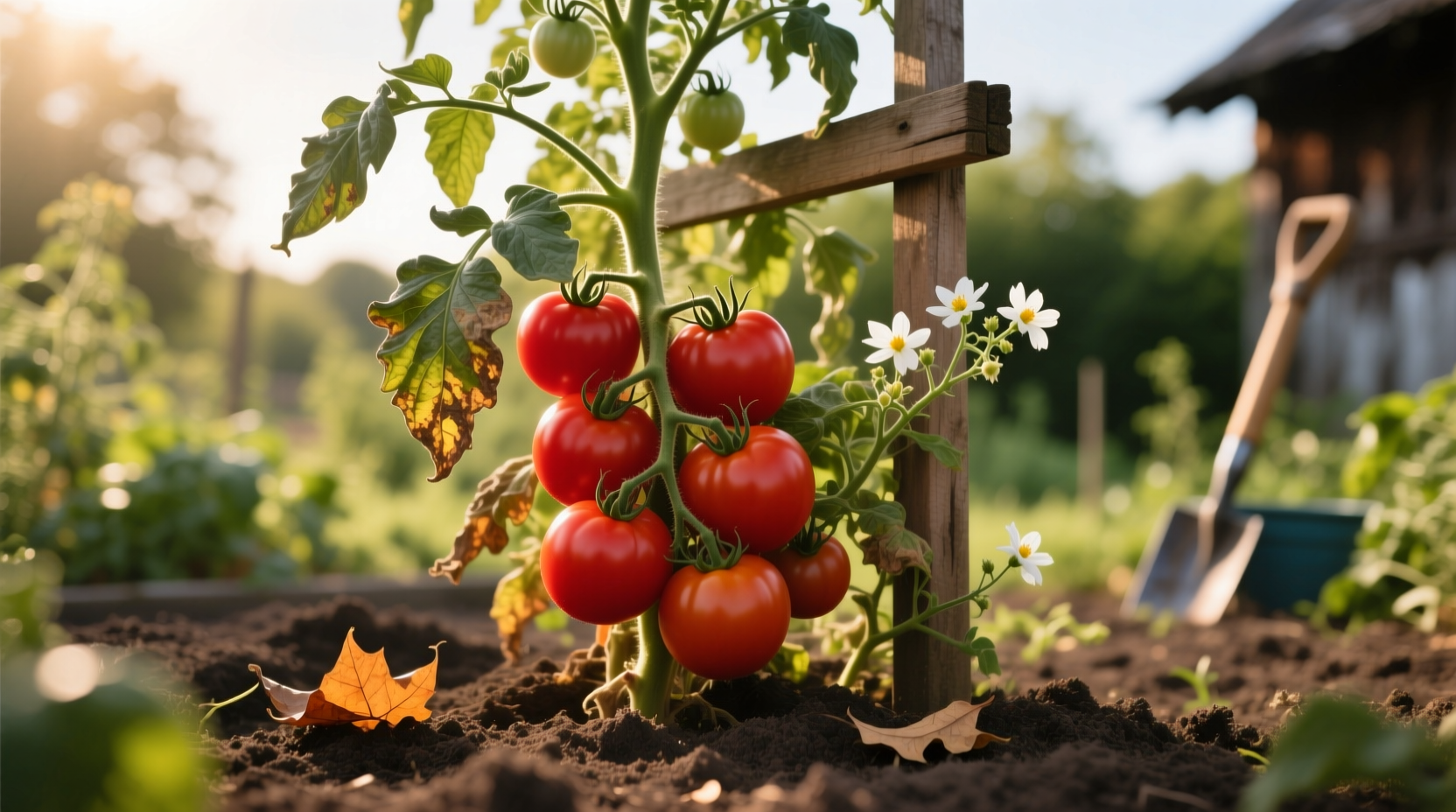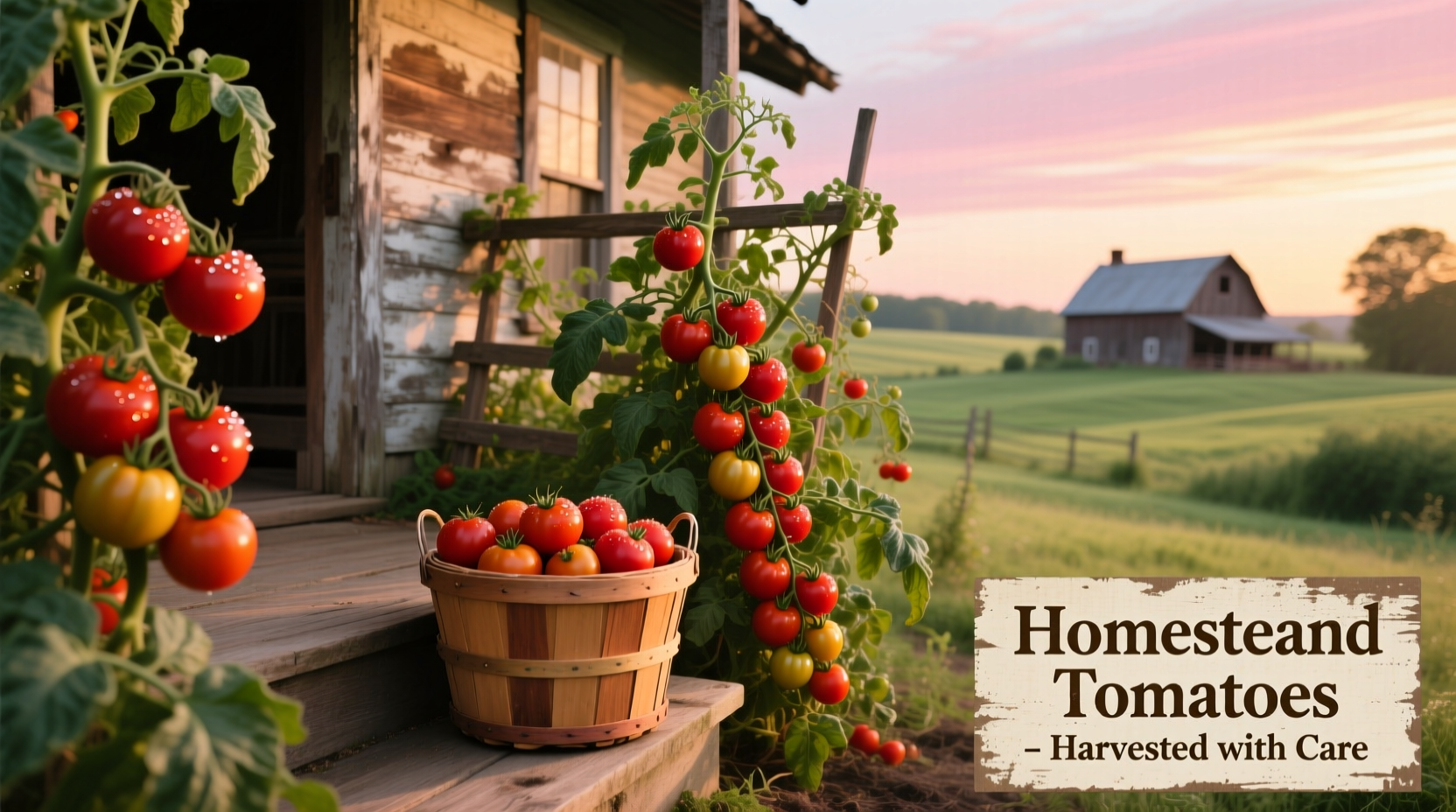Homestead tomatoes are a heat-tolerant, disease-resistant variety developed in the 1950s by University of Florida researchers specifically for southern climates. These indeterminate plants produce 6-8 ounce fruits throughout the growing season, making them ideal for home gardeners in warm regions seeking reliable yields of flavorful, versatile tomatoes.
Discover why Homestead tomatoes have remained a favorite among home gardeners for over 70 years. This comprehensive guide delivers proven cultivation techniques that help you maximize your harvest, avoid common pitfalls, and enjoy delicious, homegrown tomatoes even in challenging climates.
Why Homestead Tomatoes Stand Out in Your Garden
Developed during the post-war agricultural expansion, Homestead tomatoes addressed a critical need for varieties that could thrive in Florida's hot, humid conditions. Unlike many heirloom varieties that struggle with disease in warm climates, Homestead offers reliable production where other tomatoes fail.
These medium-sized tomatoes (6-8 ounces each) feature classic red color, firm texture, and balanced sweet-acid flavor perfect for fresh eating, sauces, and canning. Their indeterminate growth habit means continuous production throughout the season when properly maintained.

Planning Your Homestead Tomato Success
Successful Homestead tomato cultivation starts with proper planning. These heat-loving plants need specific conditions to reach their full potential.
Climate Considerations
Homestead tomatoes excel in USDA zones 8-11 but perform well in most temperate regions. Their key advantage is heat tolerance—they continue setting fruit when temperatures exceed 90°F (32°C), unlike many varieties that stop producing in extreme heat.
According to the University of Florida's Institute of Food and Agricultural Sciences, Homestead tomatoes were specifically bred to withstand southern growing conditions while maintaining fruit quality. This makes them particularly valuable for gardeners in the Southeastern and Southwestern United States where summer temperatures regularly exceed 95°F (35°C).
Soil Preparation Essentials
Prepare your soil 2-3 weeks before planting:
- Test pH and amend to 6.2-6.8 range
- Incorporate 3-4 inches of compost
- Add balanced organic fertilizer (5-5-5)
- Ensure proper drainage—raised beds work well
Homestead tomatoes prefer well-drained, loamy soil rich in organic matter. Avoid heavy clay soils unless amended significantly. The Cooperative Extension System recommends adding calcium sources like gypsum to prevent blossom end rot, a common issue in tomato cultivation.
Planting for Maximum Production
Proper planting technique establishes the foundation for healthy, productive plants throughout the season.
Starting Seeds vs. Transplants
While Homestead tomatoes can be direct-seeded, most home gardeners achieve better results with transplants:
- Start seeds indoors 6-8 weeks before last frost
- Transplant when soil temperature reaches 60°F (15°C)
- Harden off seedlings gradually over 7-10 days
- Plant deeper than container depth to encourage root growth
Optimal Spacing and Support
As indeterminate growers, Homestead tomatoes require substantial space and support:
- Space plants 24-36 inches apart in rows
- Allow 4-5 feet between rows for air circulation
- Install sturdy cages or trellis systems at planting time
- Consider Florida weave technique for row support
| Tomato Variety | Heat Tolerance | Disease Resistance | Best Climate Zones | Fruit Size |
|---|---|---|---|---|
| Homestead | Excellent | Fusarium wilt, Verticillium | 8-11 | 6-8 oz |
| Beefsteak | Moderate | Low | 5-8 | 12-16 oz |
| Cherry | Good | Variable | 4-10 | 1-2 oz |
| Roma | Moderate | Good | 5-9 | 2-4 oz |
Care and Maintenance Through the Season
Consistent care ensures your Homestead tomatoes reach their full potential and produce quality fruit throughout the growing season.
Watering Strategy
Homestead tomatoes need consistent moisture but dislike wet foliage:
- Water deeply 1-1.5 inches per week
- Water early in the morning
- Use drip irrigation or soaker hoses
- Mulch with straw or pine needles
According to research from the USDA Agricultural Research Service, inconsistent watering is the primary cause of blossom end rot in tomatoes. Maintaining even soil moisture prevents this common issue while promoting healthy fruit development.
Fertilization Schedule
Feed your plants strategically throughout the season:
- At planting: Balanced fertilizer with calcium
- When first flowers appear: Higher phosphorus formula
- During fruiting: Balanced or slightly higher potassium
- Avoid excessive nitrogen which promotes foliage over fruit
Pruning for Productivity
Proper pruning improves air circulation and directs energy to fruit production:
- Remove suckers below first fruit cluster
- Limit to 3-4 main stems for optimal production
- Prune lower leaves touching soil
- Remove yellowing or diseased foliage promptly
Managing Pests and Diseases
While Homestead tomatoes have good disease resistance, they still face common tomato challenges.
Common Issues and Solutions
Homestead's primary strengths include resistance to fusarium wilt and verticillium wilt, but watch for:
- Tomato hornworms: Hand-pick or use BT spray
- Early blight: Remove affected leaves, improve air flow
- Blossom end rot: Maintain consistent watering, add calcium
- Cracking: Avoid irregular watering patterns
The University of California's Integrated Pest Management Program notes that Homestead's disease resistance profile makes it particularly valuable in regions where soil-borne diseases are prevalent. However, no variety is completely immune, so proper cultural practices remain essential.
Harvesting and Enjoying Your Homestead Tomatoes
Knowing when and how to harvest ensures peak flavor and extends your enjoyment of homegrown tomatoes.
Harvest Timing
Homestead tomatoes typically mature 75-80 days after transplanting:
- Harvest when fruit reaches full color but is still firm
- Look for slight softening at the blossom end
- Pick before full ripeness in extreme heat to prevent splitting
- Harvest daily during peak production
Storage and Usage
Maximize your harvest with these storage techniques:
- Store at room temperature away from direct sunlight
- Never refrigerate fresh tomatoes (destroys flavor)
- Use within 3-5 days for peak flavor
- Preserve excess through canning, freezing, or drying
Homestead tomatoes' balanced flavor and firm texture make them versatile for fresh eating, sauces, salsas, and canning. Their moderate acidity creates excellent preserves with proper processing.
Homestead Tomato Timeline: From Development to Your Garden
Understanding the history of Homestead tomatoes provides context for their unique characteristics:
- 1940s: University of Florida begins breeding program for heat-tolerant varieties
- 1952: Homestead officially released as a commercial variety
- 1950s-1960s: Becomes standard for southern commercial production
- 1970s: Declines in commercial use as newer hybrids emerge
- 1980s-present: Gains popularity among home gardeners for reliability
- 2020s: Experiences resurgence due to interest in proven heirloom varieties
This timeline shows how Homestead tomatoes evolved from a commercial solution to a home gardening staple. Their enduring popularity stems from practical advantages that remain relevant decades after their development.
When Homestead Tomatoes Shine (and When They Don't)
Understanding the specific scenarios where Homestead tomatoes excel helps you determine if they're right for your garden:
Best Applications:
- Hot southern climates (zones 8-11)
- Gardens with history of soil-borne diseases
- Home gardeners seeking reliable production
- Regions with long, hot growing seasons
- Gardeners wanting versatile tomatoes for fresh eating and preservation
Limitations to Consider:
- Not ideal for short-season northern climates
- Requires support due to indeterminate growth
- Less disease resistance than some modern hybrids
- Fruit may crack during heavy rain after dry periods
- Not the sweetest variety for fresh eating compared to some heirlooms
According to the National Gardening Association's survey data, Homestead tomatoes consistently rank among the top five varieties recommended for southern home gardens due to their heat tolerance and disease resistance. However, northern gardeners often achieve better results with varieties bred specifically for cooler climates.











 浙公网安备
33010002000092号
浙公网安备
33010002000092号 浙B2-20120091-4
浙B2-20120091-4